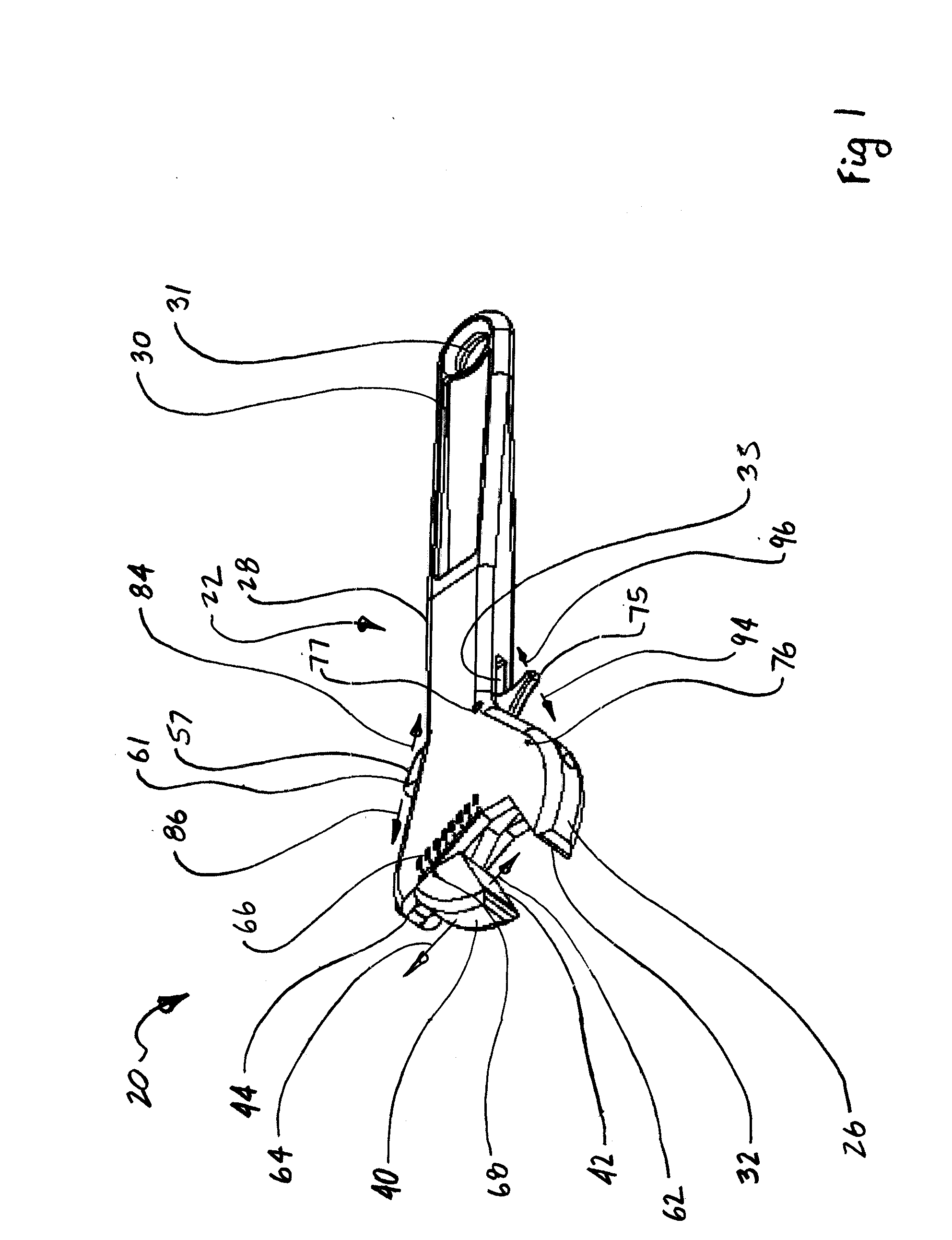Adjustable wrench
a technology of adjustable wrenches and wrenches, which is applied in the direction of wrenches, screwdrivers, manufacturing tools, etc., can solve the problems of reducing the ability of the movable jaw to reliably hold a secure position, cutting knuckles, and injury to the user's hand, so as to facilitate manual movement of the movable jaw member
- Summary
- Abstract
- Description
- Claims
- Application Information
AI Technical Summary
Benefits of technology
Problems solved by technology
Method used
Image
Examples
Embodiment Construction
[0109] With initial reference to FIG. 1 shown is a perspective view of the adjustable wrench assembly 20 with the movable jaw member 40 moved toward the open state, FIG. 2 shows a side view of the adjustable wrench assembly 20 with the movable jaw member 40 moved toward the open state, with the wrench 20 suspended from the support member 70 through use of the suspension element 71, and FIG. 3 shows a view of the adjustable wrench assembly 20 from the movable jaw member 40 end. Further, FIG. 4 shows crossectional cut 4-4 from FIG. 3, depicting the broad general interface between the movable jaw member 40, the beam 52, the trigger 75, and the handle member 22 along with the means 59 for urging the beam 52 and the means 47 for urging the movable jaw member 40. Continuing, FIG. 5 shows an expanded view of the broad general interface between the movable jaw member 40, the beam 52, the trigger 75, and the handle member 22 along with the means 59 for urging the beam 52 and the means 47 for...
PUM
 Login to View More
Login to View More Abstract
Description
Claims
Application Information
 Login to View More
Login to View More - R&D
- Intellectual Property
- Life Sciences
- Materials
- Tech Scout
- Unparalleled Data Quality
- Higher Quality Content
- 60% Fewer Hallucinations
Browse by: Latest US Patents, China's latest patents, Technical Efficacy Thesaurus, Application Domain, Technology Topic, Popular Technical Reports.
© 2025 PatSnap. All rights reserved.Legal|Privacy policy|Modern Slavery Act Transparency Statement|Sitemap|About US| Contact US: help@patsnap.com



